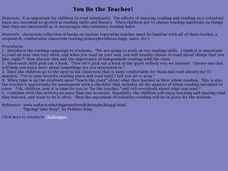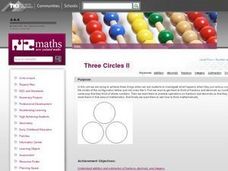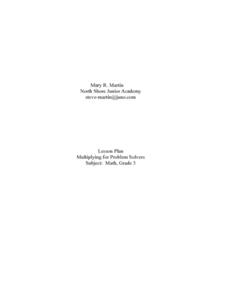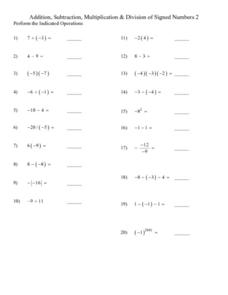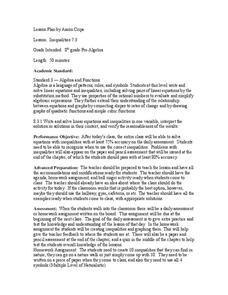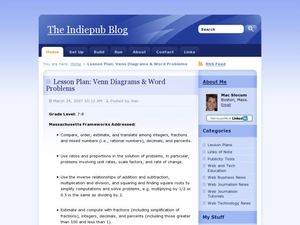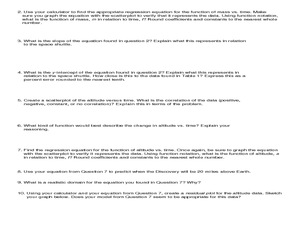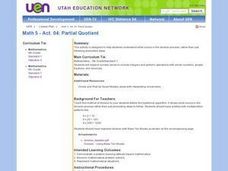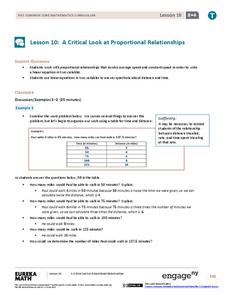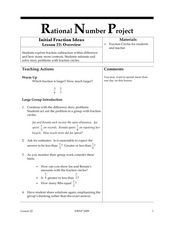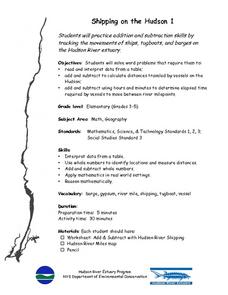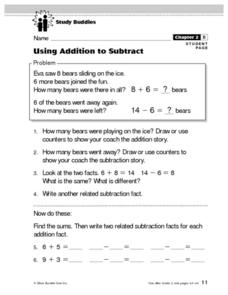Curated OER
You Be The Teacher
Young scholars create their own math problems with one restriction, the answer the teacher gives them must be kept in a sealed envelope. They may make up any kind of problem they like.
Curated OER
"Reviewing Facts Through 10" Lesson Plan
Explore the joy of math with you little learners! They practice creating math problems with numbers from a fact family using numbers 1-10. They work independently with a set of connecting cubes to aid them in creating number sentences...
Curated OER
It's About Time!
Students examine concept of time, and explore difference between analog and digital clocks; students make art project to represent time and create a time-story problem and solution.
EngageNY
Dividing by (x – a) and (x + a)
Patterns in math emerge from seemingly random places. Learners explore the patterns for factoring the sum and differences of perfect roots. Analyzing these patterns helps young mathematicians develop the polynomial identities.
Curated OER
Fairy Tale Math
Have class members rewrite a favorite fairy tale in order to incorporate numerical information. For inspiration, the teacher provides an example written by another second grader. These modified stories are then used to write word...
Curated OER
Transportation Math
Students use mathematical operations to examine truck drivers and the math they use everyday. In this transportation math lesson, students read word problems that relate to transportation and the math needed to solve the word problems....
Curated OER
Two Plus Two
Students solve simple math problems in the target language using words instead of numberals. They use the appropriate interpretive strategies to compute in the taget language. Students use complex language structures to solve the...
Curated OER
Three Circles II
Fourth graders practice a variety of strategies when investigating what happens when they put various numbers into circles of a configuration: they express a fraction as a decimal, write and solve problems involving decimal...
Curated OER
Math: Creating Problems on Computers
Third graders, in pairs, create math story problems on computers. Skills include multiplication or addition and subtraction in two-step problems. After devising their problems, 3rd graders type them and use pictures to illustrate them....
Curated OER
Codebreaker Math
Students solve addition and subtraction problems and decipher and write messages using a code. They read and discuss an informational fact sheet about the Navajo code talkers from World War II, and decode and re-code messages using math...
Curated OER
Addition and Subtraction to 10
In this addition and subtraction worksheet, 1st graders complete a set of problems using numbers 1-10, then color according to a key to create a picture.
Curated OER
Addition, Subtraction, Multiplication and Division of Signed Numbers 2
In this operation worksheet, learners solve integer equations using one operation. The equations require students to add, subtract, multiply or divide positive and negative numbers. Most equations contain only two integers, but a few...
Curated OER
Inequalities 7.3
Graph inequalities and discuss the difference in their slopes. Learners observe rate of change as they compare linear, quadratic, and cubic functions.
Curated OER
Venn Diagrams & Word Problems
Students explore the concept of Venn Diagrams through word problems. In this Venn Diagram lesson, students solve word problems about groups of people using Venn Diagrams. Students use survey results about MySpace and Facebook in a Venn...
Curated OER
Tennis Ball Tubes
Students determine whether the height of a tennis ball tube or the distance around the tube is greater, or whether they are the same. Using the formula for the circumference and diameter of a sphere, they discuss the word problem, and in...
Curated OER
Linear and Quadratic Model, Data Modeling
Students model quadratic and linear equations. In this algebra lesson, students solve word problems using equations. They create scatter plots and make predictions using correlations.
Curated OER
Partial Quotient
Students study what occurs in the division process, rather than just following prescribed steps. They expand number sense to include integers and perform operations with whole numbers, simple fractions, and decimals. They write a word...
EngageNY
A Critical Look at Proportional Relationships
Use proportions to determine the travel distance in a given amount of time. The 10th installment in a series of 33 uses tables and descriptions to determine a person's constant speed. Using the constant speed, pupils write a linear...
Curated OER
Initial Fraction Ideas Lesson 21: Overview
Students become familiar with the process of subtracting fractions. In this subtracting fractions activity, students complete examples and then write a story problem. Students continue to practice while sharing their problems.
EngageNY
Why Were Logarithms Developed?
Show your class how people calculated complex math problems in the old days. Scholars take a trip back to the days without calculators in the 15th installment of a 35-part module. They use logarithms to determine products of numbers and...
Curated OER
Shipping on the Hudson
Students track movements of ships, tugboats, and barges on the Hudson River estuary in order to practice addition and subtraction skills. They solve word problems by reading and interpreting data from a table. They calculate distances...
Curated OER
Dividing by 3's
Third graders review and practice strategies for solving division problems. In this division by 3's lesson, 3rd graders play games, use an interactive whiteboard, create flashcards, and solve word problems.
Curated OER
1st Grade Problem Solvers
First graders investigate, represent and solve problems using number facts, operations, and their properties. They solve on-step addition and subtraction number sentences and word problems using concrete materials. Students construct...
Curated OER
Using Addition to Subtract
In this using addition to subtract worksheet, learners, working with a partner, practice problem solving six word problems and equations.
